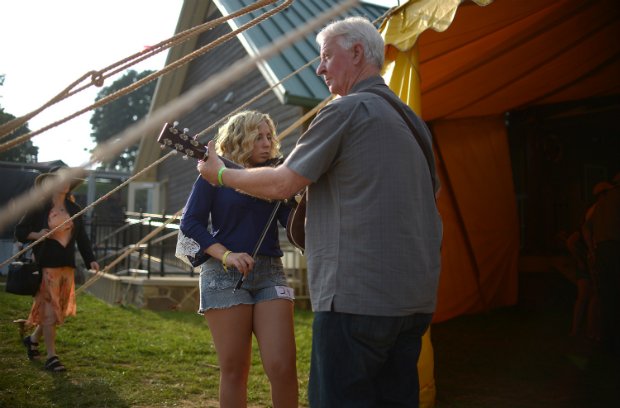Frequent readers will probably recognize the term “poverty porn”—we told you about a clever SNL sketch on the subject back in October, and my colleague Christina unpacks the concept nicely here.
Quick recap: poverty porn is a term used to describe provocative, poverty-related words and images seemingly designed to shock the viewer into donating to a given cause. Picture flea-ridden kids with sunken eyes peering out of ramshackle mud huts— we’ve all seen this sort of thing in one charity ad or another, right?
Ethically speaking, representing poverty in this way is widely considered a bad move. By focusing only on the most extreme aspects of poverty, these depictions risk misleading viewers as to what poverty really looks like and what causes it—all while robbing the subjects of their dignity and complexity as human beings. That much is old news.
But here’s a hard truth you might not have considered: Exploitative portrayals of poverty are by no means restricted to the developing world. Poverty porn can crop up anywhere—including the United States.
I recently came across a fascinating art project that drove that fact home for me in a big way. Titled “Looking at Appalachia,” this website and traveling exhibition brings together contributions from more than 100 photographers to create a sprawling new visual record of Appalachia, a region long associated with “hillbillies” and backwoods poverty.
If you aren’t already familiar with the stereotype I’m talking about, this list of videos featuring 40-plus years of pop culture references provides a handy crash-course. Note the gap teeth, bad grammar, and ever-present banjo music.
So let’s set the record straight.

Where is Appalachia, exactly? The region encompasses parts of 13 states in the eastern US, from southern New York to northern Mississippi. That’s a pretty big chunk of the United States to be boiling down to a single stereotype, no?
(Word to the wise: It turns out the region’s name is pronounced “app-uh-latch-uh” not “app-uh-lay-shuh,” as evidenced by this t-shirt created by one of the artists involved in the project.)
Roger May is the photographer and self-described “Appalachian American” who first envisioned the project. In an interview with the New York Times last week, he said he deliberately sought out images that had something new to say about the region, instead of relying on tired stereotypes.
“I didn’t want to reflect poverty porn,” May told the Times’ David Gonzalez. “I didn’t want people to think, ‘Oh, Appalachia, I got a bunch of pictures of kids in rundown trailers and broken satellite dishes.’ That’s not to say those things can’t be found in Appalachia, and not to say those things are not part of America. This is not about echoing pictures made 50 years ago.”
The 50-year-old pictures he’s referencing were made famous during President Lyndon Johnson’s “War on Poverty” in the 1960s, when stark images of impoverished Appalachians were widely distributed to drum up public support for relief efforts in the region.
Sound familiar? The same motives are often used to justify the use of ethically dubious imagery in international charity work. Which just goes to show: Whether it’s rundown trailers in Appalachia or ramshackle huts in Africa, careless depictions of poverty can saddle regions anywhere with unwelcomed stereotypes and actually impede the anti-poverty efforts they were intended to support.

For their part, the photos of “Looking at Appalachia”—all 300 of them—provide a welcomed counter-narrative to the 60s-era stereotypes. Their styles and subjects range from portraiture to landscapes to documentary-style photography, uncovering nuance and beauty even in the presence of the undeniable poverty still present in the region to this day.
I say the world needs more projects like this. Check out a few more selections from the series below, or visit lookingatappalachia.org to view the full gallery and find out how you can take part.




___
Main photo: Stephen Speranza - February 15, 2014. Wilmerding, Allegheny County, Pennsylvania. All photos used with permission.